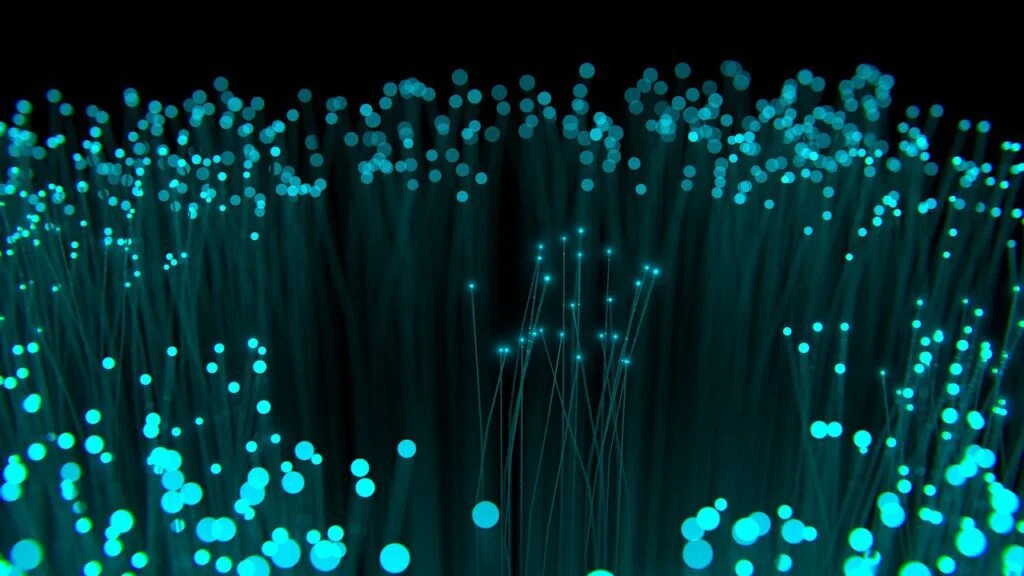Learn about Fiber Optic Internet in Germany. Explore the availability, cost, and benefits of Fiber optic internet connection. Discover the advantages of a fiber optic connection over traditional cable options.

Key takeaways
- Fiber optic offers high-speed and reliable internet. It has low latency and high bandwidth. Thus delivering the best internet experience.
- Telekom owns 43% of the total fiber optic network in Germany.
- Fiber optic internet plans are expensive. A 1000 Mbit/s internet plan costs around 56.5 € per month with discount and 69 € per month without.
- 15.1 million fiber optic connections have been installed as of 2023. But only half are technically usable by the customers to get internet. A mere 25% (3.8 million) of connections have active users.
This is how you do it
- An average internet user doesn’t need a fiber optic connection. For most people, 100 Mbit/s of broadband internet is enough.
- You can benefit from the high-speed fiber optic internet connection if you are an intensive internet user (online gaming, heavy data download and upload, etc.).
- Check whether a fiber optic connection is available in your area. You can check it on the Federal Network Agency’s Broadband Atlas.
- You can compare the fiber optic internet tariffs on Check24* and Verivox*.
Table of contents
Benefits of fiber optic network
Fiber optic connections send data in the form of light signals. On the other hand, DSL and TV cables transmit data using electric pulses.
As fiber optic technology is developed to transmit data reliably at high speed, it offers the following benefits.
- Fast and stable internet.
- Currently, internet providers offer plans with a maximum download speed of 1000 Mbit/s and an upload speed of 500 Mbit/s.
- Fiber optic technology is capable of offering even faster internet plans.
- Low response times (latency). It means less delay in transmitting and receiving data. Thus, you can play your favorite shooting game online and take advantage of the low response time to sneak on your opponent.
How do you get the internet via fiber optic cables in Germany?
Depending on the fiber optic line availability in your area and house, the cost and difficulty of getting internet via fiber optic vary.
- You have a fiber optic connection in your home. In this situation, contact the internet service provider who installed the fiber optic lines to get an internet plan. You can also check the fiber optic plans available in your area on Check24* and Verivox*.
- Your street has a fiber optic cable, but not your house. You must first install the fiber optic cables in your house and connect it to the main network. It may cost you around 1000 € to 1500 €.
- Your neighborhood doesn’t have a fiber optic network. It’s the worst situation to be in. In this case, either wait until one of the telecom companies install the fiber optic cables or install it yourself. Applying for an individual fiber optic connection will cost you around 3500 € or more to set up the infrastructure. So, decide accordingly.
Find the best internet plans in Germany
- Compare internet service providers and their offers.
- Filter the results based on your requirements.
- Apply for the best internet plan on the portal directly.
How do you check if fiber optics is available in your area?
You can check the Federal Network Agency’s Broadband Atlas to know if your street has a fiber optic connection. Other sources where you can check the fiber optic internet availability.
- Comparison portals – Check24* and Verivox*.
- Internet providers – Telekom, Vodafone, Deutsche Glasfaser.
Do you need broadband internet via fiber optic?
An average internet user doesn’t really need 1000 Mbit/s internet plans. To stream 4K videos seamlessly, you need a stable 25 Mbit/s internet speed only.
So, a gigabit plan is an overkill.
But it’s a future technology. So, if you are constructing or renovating your house, you should definitely install fiber optic cables.
With more and more household devices getting connected to the internet, you’ll need high-speed internet in the future.
Imagine AR (Augmented reality) replacing video conferencing. Suddenly, 1000 Mbit/s would be the minimum internet speed you need.
Here is how high internet speed you can achieve with other internet connection types
| Internet connection type | Download speed | Upload speed |
| DSL | 250 Mbit/s | 50 Mbit/s |
| TV cable | 1.000 Mbit/s | 50 Mbit/s |
| Fiber optic | 1.000 Mbit/s | 500 Mbit/s |
For now, a good DSL or cable connection would suffice. But if you can get and afford fiber optic internet, go for it.
You can compare the internet plans on comparison portals Check24* and Verivox*.
How much does a fiber optic connection cost in Germany?
Fiber optic internet is expensive in Germany. On average, a 1000 Mbit/s internet plan costs 56.5 € per month with discount and 69 € per month without.
On the other hand, a 250 Mbit/s DSL internet plan costs 33 € per month. And a 250 Mbit/s cable plan costs only 22 € per month.
What is FTTH, FTTB, and FTTC?
FTTH (Fiber to the home)
In FTTH (Fiber to the Home), the fiber optic cables are installed up to the home.
FTTB (Fiber to the building)
In FTTB (Fiber to the Building), the fiber optic cables are laid up to the building. The optic cables are not installed in the apartments.
Existing coaxial or copper cables are used for the data transmission from the building to the apartments. FTTB offers higher internet speed and reliability than traditional DSL or Cable connections.
FTTC (Fiber to the curb)
In FTTC (Fiber to the Curb), the fiber optic cables are installed up to the distribution box on the street. The internet data is forwarded from the distribution box to the houses via an existing DSL or Cable network.
FTTC offers faster internet speed and reliability compared to DSL and cable networks. However, the internet speed and reliability are lower compared to FTTH and FTTB.
What is fiber optic coverage in Germany?
As of 2023, 15.1 million FTTH and FTTB connections are available. It means 15.1 million buildings and houses have fiber optic connections.
Here is a further breakdown of these 15.1 million connections.
- 3.8 million (25.2%) customers are using FTTH or FTTB connections.
- 3.2 million (21.2%) houses have a fiber optic connection but no active customers.
- 8.1 million (53.6%) FTTH and FTTB connections are not yet connected to the building or the house. Hence, customers cannot use these fiber optic connections.
Source: VTAM
Which internet provider has the largest fiber optic network?
Telekom is a clear winner by owning 43% of the total fiber optic network as of 2023. Other major players are Vodafone and Deutsche Glasfaser.
There are also regional internet providers like M-net and Net-Cologne that are actively laying down fiber optic lines.
Which German cities have good fiber-optic internet coverage
| Federal State | FTTH/B availability as a percentage of private households in Germany as of June 2022 | FTTH/B availability as a percentage of private households in Germany as of June 2023 |
|---|---|---|
| Hamburg | 44,22 | 64.75 |
| Schleswig-Holstein | 41,35 | 55.26 |
| Lower Saxony | 30,18 | 48.49 |
| Brandenburg | 27,52 | 36.65 |
| Mecklenburg-Vorpommern | 25,48 | 34.19 |
| Bayern | 18,99 | 24.36 |
| North Rhine-Westphalia | 18,36 | 29.59 |
| Saxony-Anhalt | 12,62 | 23.15 |
| Saxony | 12,45 | 23.4 |
| Bremen | 9,79 | 25.22 |
Source: Statista
